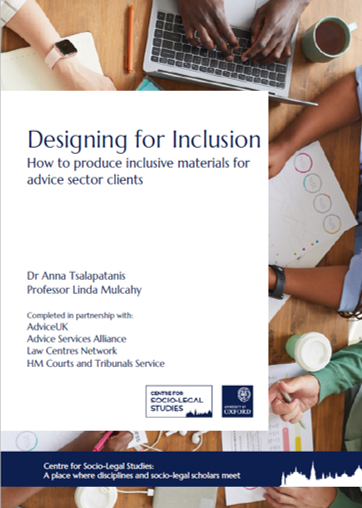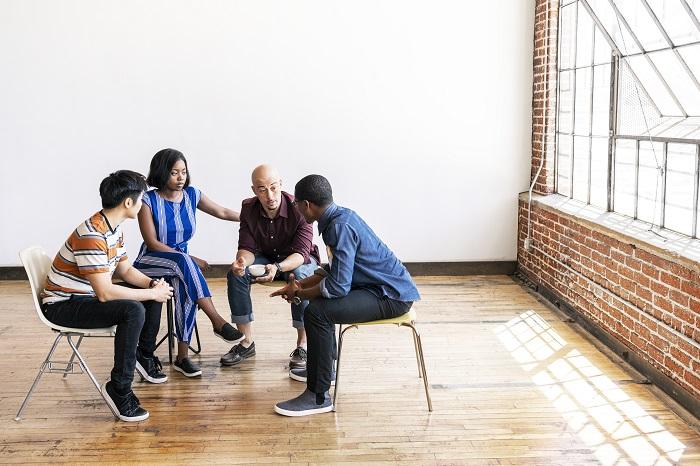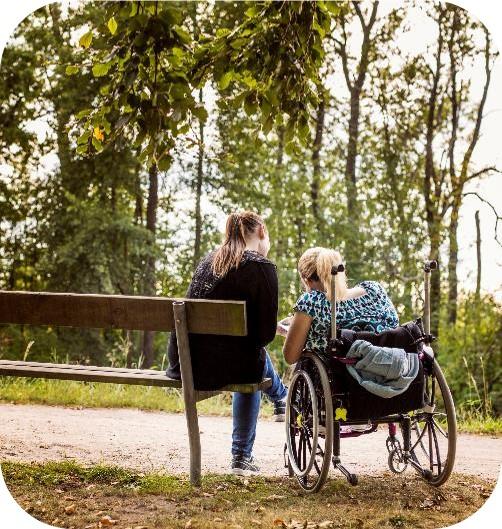
We are pleased to announce that following two phases of successful research, the resulting inclusive design guide, entitled Designing for Inclusion: How to produce inclusive materials for advice sector clients, is complete.
It is available in two formats:
About this Guide
Front line advice workers are experts in knowing what information to give to people and communities. Drawing on good practice in the sector, this guide focuses on how to best present advice and information in ways that are accessible and easy to understand. This guide has been designed with the needs of smaller organisations in mind, especially those who may not have a dedicated communications officer or team. It is designed to be brief but contains many links to further resources including specialist national organisations.
The guide is split into six key sections, with additional information in the appendices at the end. The six sections are:
1. Who are you Designing for?
This section considers steps to take when reflecting on who your users are and what the best information formats are for them.
2. The Design Process: Define, Research, Create, Test, and Redesign, and Monitor
This section discusses the lessons that can be learnt from best practice in the design world including the need for testing and evaluation.
3. General Guidance
This section provides a general overview of the guidance that applies to most information formats including how to find or make the right images to accompany the information provided.
4. Format Specific Guidance
This section focuses on good practice in producing websites, print materials, digital documents, podcasts, films and social media outputs.
5. Accessibility and Inclusivity Considerations
This section looks at the things we should keep in mind when engaging with certain groups such as those with low literacy, neurodiversity, learning disabilities, low vision or a sight impairment, hearing impairments, or those who are non-native users of English. It also includes information about how to be inclusive and diverse in your choice of language.
6. Working with External Suppliers or Freelancers
Finding the right people for the job and working with them to create what you need is not always simple. This final section provides guidance on how to find the right experts, provide them with a brief, and make sure you get the most out of the process.
Information about the project
This ESRC funded impact acceleration project builds on the successful Supporting Online Justice project which was completed in May 2022, and involved the production of films to help lay users access online hearings. In this new project, we are working in collaboration with HMCTS and three national not-for-profit umbrella organisations (AdviceUK, Advice Services Alliance and the Law Centres Network) which together represent all law centres and a significant proportion of free community-based advice services in England and Wales, including Citizens Advice.

Aims and Objectives
This project brings together the considerable experience of need and access issues within the legal advice sector with the applicants’ existing research and practice on designing inclusive materials. The primary aim is to create a free and easy to use design toolkit which will support resource hungry community legal advice workers in producing customised and accessible resources for their clients. The toolkit will indicate how resources can be designed in ways that are accessible to people who are neurodiverse, sight or hearing impaired, colour vision deficient, differently abled, signers, MAKATON users, non-native users of English, have limited vocabularies or low reading age.
Description of Activities
The impact acceleration activities will be conducted in five main stages:
1. Consulting front-line advisers and other stakeholders to identify their specific needs and existing best practice in the sector. This will involve up to ten online knowledge exchange workshops with national organisations and front-line advice providers. It will result in coproduction of a design brief.
2. Designing a sample guide for testing.
3. Testing the products with up to ten online knowledge exchange workshops with front line advisers.
4. Re-designing and enhancement of the materials to address issues raised at stage three.
5. Launching the materials and accessible design guidance on an open access dedicated website which will be co-badged with our project partners.




